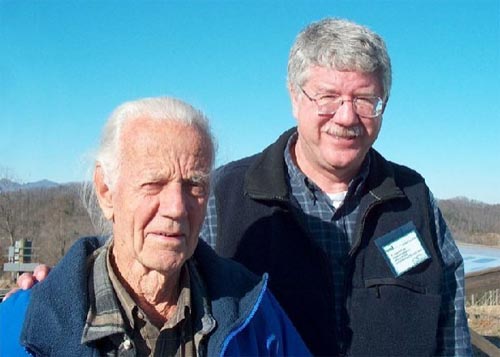John Lowry Dobson Oral History Interview
Interviewer: Owen Hoffman
Interview Location and Date: Peyton Room, Crater Lake Lodge, Crater Lake National Park, Oregon, July 31, 2004
Transcription: Transcribed by Owen Hoffman, with editing from Stephen R. Mark, Crater Lake National Park historian, December 2005
Biographical Summary (Photo and bio. summary from Wikipedia.com)
John Lowry Dobson (born September 14, 1915) is a highly influential amateur astronomer. He is most well known in astronomy circles because his name is attached to the popular Dobsonian telescope design. He is credited for inventing the design, which is used by a large number of amateur astronomers. He is lesser known for his efforts to promote awareness of astronomy through sidewalk astronomy. Dobson’s popularity, particularly his association with telescope building, has made him a frequent guest at meetings of amateur astronomers. He often leverages this popularity to draw attention to his unorthodox views of cosmology.
John Dobson has been dubbed by some as the “pied piper of astronomy”, and the “star monk”. He was the only amateur astronomer highlighted in the PBS series The Astronomers, and appeared twice on The Tonight Show Starring Johnny Carson. He has also been featured in two recent documentaries, Universe–The Cosmology Quest and A Sidewalk Astronomer.
He was born in Beijing, China. His maternal grandfather founded Peking University, his mother was a musician, and his father taught zoology at the University. He and his parents moved to San Francisco, California in 1927. His father accepted a teaching position at Lowell High School and taught there until the 1950s. He spent 23 years in a monastery, after which he became more active in promoting astronomy, and his own brand of nonstandard cosmology.
Materials Associated with this interview on file at the Dick Brown library at Crater Lake National Park’s Steel Visitor Center: taped interview
In this 1994 video John Dobson reviews his life of sidewalk astronomy and makes the case for amateurs going public with their scopes. Includes clips from his telescope making and cosmology classes.


